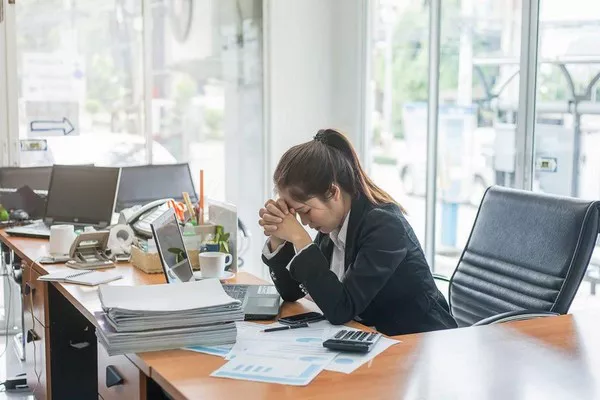Experiencing an anxiety attack can be overwhelming and frightening. During an attack, you may feel intense fear, rapid heartbeat, shortness of breath, and a sense of impending doom. Understanding anxiety attacks and learning how to manage them is crucial for regaining control. This article will provide a detailed guide on how to calm yourself during an anxiety attack. We will explore what anxiety attacks are, their symptoms, effective coping strategies, and when to seek professional help.
Understanding Anxiety Attacks
What is an Anxiety Attack?
An anxiety attack, often referred to as a panic attack, is a sudden episode of intense fear or discomfort. This experience can occur unexpectedly or in response to a specific trigger. Anxiety attacks can happen to anyone, but they are more common in individuals with anxiety disorders.
Symptoms of an Anxiety Attack
The symptoms of an anxiety attack can vary from person to person. Common symptoms include:
Rapid Heartbeat: You may feel your heart racing or pounding in your chest.
Shortness of Breath: You might feel like you cannot catch your breath or are choking.
Sweating: Excessive sweating, even in cool environments, is common.
Trembling or Shaking: You may experience shaking in your hands or body.
Chest Pain: Some people report chest discomfort, which can mimic heart problems.
Dizziness or Lightheadedness: Feeling faint or unsteady is a common symptom.
Nausea or Stomach Upset: Some may feel sick to their stomach or experience gastrointestinal distress.
Fear of Losing Control: You might feel like you are losing control or going crazy.
Fear of Dying: Many people fear that they are having a heart attack or are in danger.
These symptoms can be frightening, but it is important to remember that they are not life-threatening. Understanding this can help reduce fear during an attack.
Causes of Anxiety Attacks
Anxiety attacks can be triggered by various factors, including:
Stressful Life Events: Major life changes, such as moving, job loss, or relationship issues, can trigger anxiety attacks.
Chronic Stress: Ongoing stress from work, school, or personal relationships can lead to anxiety.
Health Issues: Certain medical conditions or medications can contribute to anxiety.
Substance Use: Caffeine, alcohol, and recreational drugs can increase anxiety levels.
Genetics: A family history of anxiety disorders can increase the likelihood of experiencing anxiety attacks.
Coping Strategies During an Anxiety Attack
When you feel an anxiety attack coming on, there are several strategies you can use to calm yourself. Here are some effective techniques:
1. Focus on Your Breathing
Breathing exercises are one of the most effective ways to calm your body during an anxiety attack. Here’s how to practice deep breathing:
Find a Comfortable Position: Sit or lie down in a comfortable position. Close your eyes if it helps you focus.
Inhale Slowly: Take a deep breath in through your nose for a count of four. Fill your lungs completely.
Hold Your Breath: Hold your breath for a count of four. This pause allows oxygen to circulate in your body.
Exhale Slowly: Breathe out through your mouth for a count of six. Focus on releasing tension with each exhale.
Repeat: Continue this cycle for several minutes. You should start to feel more relaxed and centered.
2. Ground Yourself
Grounding techniques can help you stay connected to the present moment. Here are some effective grounding exercises:
Five Senses Exercise: Take a moment to notice your surroundings. Identify five things you can see, four things you can touch, three things you can hear, two things you can smell, and one thing you can taste. This exercise can help anchor you in the present.
Physical Sensation: Focus on the sensation of your feet on the ground. Feel the weight of your body pressing down. This awareness can help ground you.
Use a Comfort Item: If you have a small object, such as a stress ball or a piece of jewelry, hold it in your hand. Focus on its texture and temperature.
3. Use Positive Affirmations
Positive affirmations can help shift your mindset from fear to calmness. Here are some examples:
“I am safe.”
“This feeling will pass.”
“I can handle this.”
Repeat these affirmations to yourself during the anxiety attack. This practice can help reduce negative thoughts and promote a sense of safety.
4. Visualize a Calm Place
Visualization can help create a mental escape from anxiety. Here’s how to practice visualization:
Close Your Eyes: Find a quiet space and close your eyes.
Imagine a Safe Place: Visualize a place where you feel calm and safe. This could be a beach, a forest, or any location that brings you peace.
Engage Your Senses: Imagine the details of this place. What do you see, hear, smell, and feel? Engaging your senses can make the visualization more effective.
Stay in the Moment: Spend a few minutes in this visualization, allowing yourself to feel the peace of the scene.
5. Move Your Body
Physical movement can help release tension and reduce anxiety. Here are some ways to incorporate movement:
Take a Walk: If you can, go for a short walk. Focus on your surroundings and the sensation of your feet on the ground.
Stretch: Gentle stretching can help relieve tension in your muscles. Focus on areas where you feel tightness, such as your neck and shoulders.
Engage in Exercise: If you have time and energy, consider doing a short workout. Exercise releases endorphins, which can improve your mood.
6. Listen to Calming Music
Music can have a powerful effect on your emotions. Here’s how to use music to calm down:
Create a Playlist: Curate a playlist of calming or uplifting songs that help you relax.
Listen Actively: Take a moment to listen to your favorite songs. Focus on the lyrics, melody, and emotions they evoke.
Use Nature Sounds: Consider listening to recordings of nature sounds, such as rain or ocean waves. These sounds can promote relaxation.
7. Practice Mindfulness
Mindfulness can help you become more aware of your thoughts and feelings without judgment. Here’s how to practice mindfulness during an anxiety attack:
Focus on Your Breath: Pay attention to your breath. Notice the sensation of air entering and leaving your body.
Observe Your Thoughts: When anxious thoughts arise, observe them without reacting. Acknowledge them and let them pass.
Stay Present: Bring your awareness to the present moment. Focus on what you can see, hear, and feel around you.
8. Use Aromatherapy
Aromatherapy can provide calming effects for some individuals. Here’s how to use it:
Choose Calming Scents: Essential oils such as lavender, chamomile, and bergamot are known for their calming properties.
Use a Diffuser: If you have a diffuser, consider using it to disperse calming scents in your environment.
Inhale Directly: If you have essential oils, you can inhale them directly from the bottle or apply a small amount to your wrists.
9. Reach Out for Support
Sometimes, talking to someone can help you process your feelings. Here’s how to seek support:
Call a Friend or Family Member: Reach out to someone you trust. Sharing your feelings can provide relief and comfort.
Join a Support Group: Consider joining a support group for individuals with anxiety. Connecting with others who understand can be helpful.
Use Hotlines: If you need immediate support, consider contacting a mental health hotline. They can provide guidance and support during difficult moments.
10. Challenge Negative Thoughts
Anxiety attacks often involve negative thought patterns. Here’s how to challenge those thoughts:
Identify Negative Thoughts: Notice the negative thoughts that arise during the attack. What are you telling yourself?
Reframe Your Thoughts: Challenge negative thoughts by reframing them. For example, if you think, “I’m going to die,” reframe it to, “I am safe, and this feeling will pass.”
Focus on Evidence: Remind yourself of past experiences where you successfully managed anxiety. This evidence can help counteract negative thinking.
11. Use Distraction Techniques
Distraction can help take your mind off the anxiety attack. Here are some techniques to try:
Engage in a Hobby: If you have a hobby you enjoy, such as drawing, knitting, or reading, engage in it to distract yourself.
Watch a Movie or Show: Consider watching a light-hearted movie or show to take your mind off the anxiety.
Play a Game: If you enjoy gaming, consider playing a video game or a puzzle to keep your mind occupied.
12. Create a Calming Environment
Your environment can significantly impact your mood. Here are some tips for creating a calming space:
Declutter Your Space: A tidy environment can promote a sense of calm. Take a few minutes to organize your surroundings.
Use Calming Colors: Surround yourself with calming colors, such as blues and greens, which can create a soothing atmosphere.
Limit Noise: If possible, reduce background noise. Consider using noise-canceling headphones or playing soft instrumental music.
13. Establish a Routine
Having a routine can provide structure and predictability, which can help reduce anxiety. Here’s how to establish a routine:
Create a Daily Schedule: Plan your day with specific activities and breaks. Having a schedule can help you feel more in control.
Incorporate Relaxation Time: Set aside time each day for relaxation and self-care. This time can be used for deep breathing, meditation, or any activity that calms you.
Prioritize Sleep: Ensure you get enough restful sleep each night. Lack of sleep can increase anxiety levels.
14. Practice Self-Compassion
Being kind to yourself is essential during an anxiety attack. Here’s how to practice self-compassion:
Acknowledge Your Feelings: Recognize that anxiety is a common experience. It is okay to feel anxious, and you are not alone.
Avoid Self-Criticism: Instead of criticizing yourself for feeling anxious, remind yourself that it is a natural response to stress.
Treat Yourself with Kindness: Speak to yourself as you would to a friend. Offer yourself words of encouragement and support.
When to Seek Professional Help
While anxiety attacks can often be managed with self-help strategies, there are times when professional help may be necessary. Here are some signs to consider:
Frequent Attacks: If you experience anxiety attacks regularly, it may be helpful to speak with a mental health professional.
Impact on Daily Life: If anxiety is interfering with your daily activities, work, or relationships, seeking support can provide relief.
Overwhelming Fear: If you find yourself avoiding situations due to fear of having an anxiety attack, a therapist can help you address these fears.
Coping with Trauma: If your anxiety is related to past trauma or unresolved issues, therapy can provide a safe space for healing.
Conclusion
Calming yourself during an anxiety attack is essential for regaining control and reducing fear. By understanding anxiety attacks and implementing effective coping strategies, you can navigate these challenging moments more effectively. Techniques such as deep breathing, grounding exercises, positive affirmations, and visualization can help you find calmness.
Remember that experiencing anxiety attacks is not a sign of weakness. It is a common human experience, and with practice, you can learn to manage your anxiety more effectively. If you find that anxiety continues to be a barrier in your life, don’t hesitate to seek professional help. Your mental health is important, and taking steps to care for it is a sign of strength. With the right strategies and support, you can overcome anxiety and lead a fulfilling life.
Related topics:























